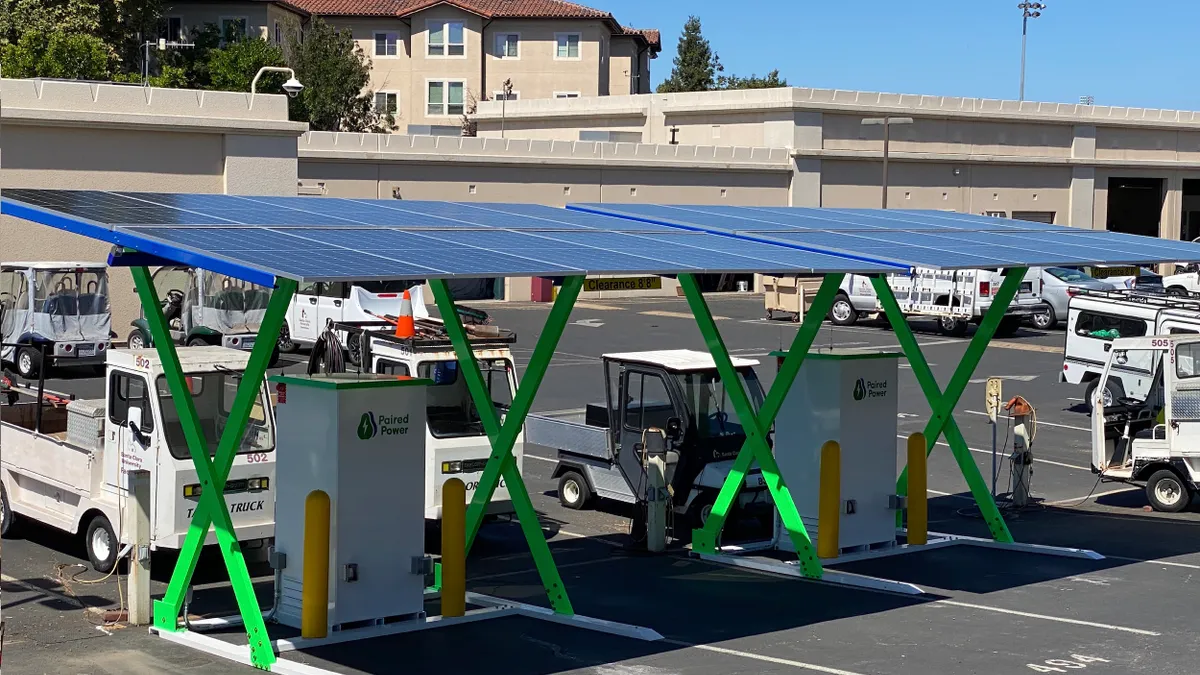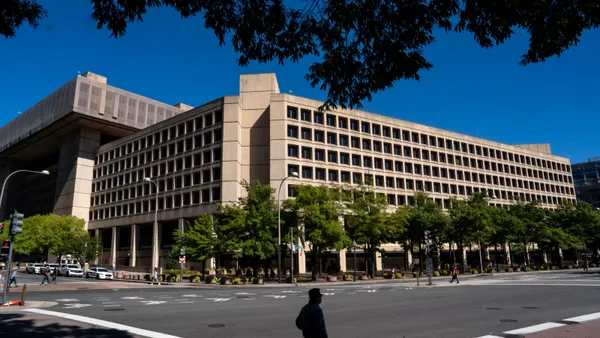Dive Brief:
- Paired Power has installed two solar-and-battery-powered electric vehicle chargers at Santa Clara University’s facilities yard to support the university’s fleet of maintenance and other electric vehicles.
- The charging systems, known as “PairTrees,” combine solar canopies with attached batteries for energy storage and available electric grid connections, Paired Power said in a news release last month.
- “PairTree chargers offer a resilient solution that harnesses the power of the sun while reducing the university’s reliance on the fossil fuel-powered grid [and] providing a perfect model of how forward-thinking institutions can take advantage of solar technology,” Paired Power CEO Tom McCalmont said in a statement.
Dive Insight:
Santa Clara University is one of the first universities to install Paired Power’s products to power a fleet, the charging infrastructure provider said. But other U.S. universities have ambitious fleet electrification plans — such as Michigan State University, which in 2022 announced plans to electrify about 370 of its 1,100 fleet vehicles by 2032, and Princeton University, which unveiled a 17-vehicle electric bus fleet last October.
Santa Clara University’s facilities department utilizes more than 30 electric vehicles in daily operations for landscaping, recycling and custodial activities on the institution's campus near San Jose, California. The university aims to achieve “climate neutrality” — defined as net-zero emissions of carbon dioxide and other planet-warming gasses like methane and nitrous oxide — from energy use and transportation by 2029, according to its 2019 sustainability plan.
“By integrating Paired Power’s solar EV chargers into our operations, we’re not only generating renewable energy to charge our fleet, we are also modeling for our students how an organization can take responsibility for reducing carbon pollution,” Santa Clara University Assistant Vice President for University Operations Sean Collins said in a statement.
Paired Power solar charging stations use bifacial solar panels that draw energy directly from the sun above and from sunlight reflected off the pavement below. Each PairTree module pairs 4.6 kilowatts of solar photovoltaic capacity with up to 42.4 kilowatt hours of attached battery storage capacity and a Level 2 Universal SAE J1772 charger rated for up to 8 kW of power output, according to a specification sheet.
Each station is accessible via QR code, comes with remote monitoring and energy management software capabilities, and can provide up to 230 daily miles of driving range with battery, Paired Power says.
California has established itself as a leader in fleet electrification thanks to its Advanced Clean Fleets rule, which mandates a phased-in transition toward zero-emission medium- and heavy-duty vehicles and an end to combustion truck sales in 2036 — a requirement that accounts for public commitments to transition to zero-emission technology among truck manufacturers and potential cost savings for fleets. “By 2035, zero-emission truck/chassis sales would need to be 55% of Class 2b – 3 truck sales, 75% of class 4 – 8 straight truck sales, and 40% of truck tractor sales,” according to the California Air Resources Board’s fact sheet on the rule.
Charging infrastructure developers are making significant investments to meet expected demand for heavier-duty electric fleets in California. Earlier this year, EV Realty and GreenPoint Partners announced a $200 million joint venture to build out a network of multi-fleet charging hubs around the National Zero-Emission Freight Corridor Strategy’s Phase 1 hubs.













